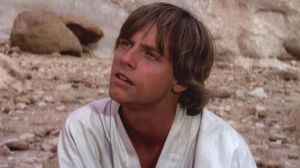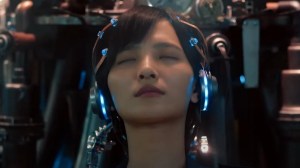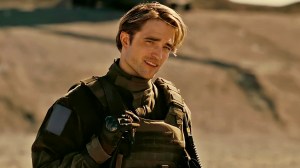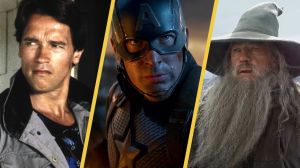Zombieland: Double Tap hit theaters last weekend, taking in a higher-than-expected total at the box office and building on it predecessor’s opening weekend numbers. The film seems to be satisfying audiences, especially those who enjoyed the original film, earning a perfect score in ComicBook.com’s official review. Not only did the original cast of Woody Harrelson, Emma Stone, Jesse Eisenberg, and Abigail Bresling return but they were brought back by original director Ruben Flesicher — in addition to some newcomers in the form of Rosario Dawson, Luke Wilson, Thomas Middleditch, and standout Zoey Deutch.
Videos by ComicBook.com
For Flesicher, returning to Zombieland felt a lot like going home. “The great thing is that everyone involved for the most part was from the original,” he tells ComicBook.com before noting that he was excited that writers Rhett Reese and Paul Wernick also returned. “We all hold the first one very near and dear to our heart, and so our only real goal was to maintain or try and recapture the spirit of the original as best as we could.”
While Zombieland: Double Tap does offer up a lot of what the original did, following sa somewhat formulaic plot structure, it also offered up enough unique elements to feel fresh for today’s audiences. Furthermore, Fleischer was given a chance to flex his directorial muscles, especially in a pair of continuous shots which were drastically different from one another. In an exclsuive interview with the director, ComicBook.com took a deep dive into Zombieland: Double Tap with Fleischer.
Read the full interview below!

ComicBook.com: 10 years later, you got everybody back, you added some newcomers, but what did you do when you were on set and you were in pre-production to make sure you get back in a rhythm and a groove to recapture the magic?
Reuben Fleischer: Well, the great thing is that everyone involved for the most part was from the original. Me, Paul, Rhett, Gavin, the producer, we all hold the first one very near and dear to our heart, and so our only real goal was to maintain or try and recapture the spirit of the original as best as we could. The cast are just all so talented and so naturally funny and charming that it honestly didn’t require much effort. I don’t think we ever really veered off course where we’re like, “Oh no, that doesn’t feel right.” Everyone just kind of stepped into it as if no time had passed. It was pretty incredible.
CB: Yeah. It’s been 10 years in both our world and the movie’s world, but obviously they haven’t had pop culture and technology and all these different advancements because their world ended 10 years ago. How did you find the sweet spot for the comedy in it and making sure that you kept everything dated enough but feeling fresh?
RF: Yeah. Actually, I found that that to be a really fun challenge, knowing that we couldn’t refer to anything post-2009. I’m not a fan of winky jokes, even though we have one with The Walking Dead in there. I felt they needed some acknowledgement. But, yeah, I think keeping everything pre-apocalyptic is key. I think Zoey Deutch character, Madison, is the best example of that because she’s stuck in this frozen kind of limbo of Lindsay Lohan, Paris Hilton, Juicy couture, Von Dutch era. She’s probably the most time-stamped of all the characters. But I found joy in putting that challenge upon ourselves where we had to keep everything as if time had stopped in 2009.
CB: You mentioned The Walking Dead comic. I do a lot of work with Walking Dead, and I’ve been a fan of that franchise for awhile. I noticed you picked a book that was published in 2006, which fits Zombieland‘s mythology since their apocalypse started in 2009. How’d you guys decide to make that reference?
RF: Well, it’s funny because I actually read a ton of The Walking Dead prior to making Zombieland because it was one of the best examples of survivors living in a zombie post-apocalypse. I like the nod in that respect because I was actually reading it at that time to inform this movie. But, yeah, it felt like there had to be some acknowledgments given how it’s such a juggernaut of a show and definitely the most significant zombie property out there.
As far as choosing that specific book, I mean, I just loved that cover. I thought it was really, really cool and so it was a good one to feature.

CB: Did you guys consider having a Walking Dead actor cameo, as if they never even got on the show?
RF: Yeah, that’s funny. Emma [Stone] actually pitched that at one point during the development of the script. She thought it’d be funny if, as they were traveling through the post-apocalyptic landscape, they happen across some of the members of The Walking Dead and just in passing, which I think would’ve been really funny. Given that they shoot in Atlanta, as did we, it felt like it would have been not too hard to achieve, but it was just a hair to meta, winky wink, as to break the reality of our movie. But I always thought that would’ve been a funny scene, and I know fans would have appreciated it.
CB: You have two really cool, continuous shots in the movie. One is in the White House, and it’s all conversation, and then the other one is that action sequence with the doppelgangers. It looked like the White House one was on a huge set you guys built. How did you bring these two continuous shots to life? Was one more challenging than the other?
RF: Yeah, I’m so glad that you mentioned those because they’re two of the things I’m most proud of in the movie. I’ve got to give a lot of credit to my cinematographer, Chung-hoon Chung, who is a master and among other things shot Old Boy, which is a very famous single-take fight scene. He’s really a true master.
The one in the White House was inspired more though by the West Wing, and how they do all those really long tracking shots. We thought, “Oh that’s kind of funny. We’re in the White House. Let’s do a nod to the West Wing, even though we don’t have all the people swirling around. We have this terrific steady cam operator, B.J. O’Connell, who I’ve worked with before. Just the physical aspect of having a hold that 80-pound rig for that long and go up stairs and everything else. I mean, it was a a lot for him to have to pull off for that one. But I love how it just all plays in one all the way through to Madison’s arrival. It really is a testament to the actors’ performances because there’s no takes in there. I call it my Birdman shot because it’s seeing Emma in a wide lens walking through different environments without a take just reminds me of that film.
But then the other one is more tricky. That one is actually seven shots stitched together. You’re right, it was a set that we built on location. We found this old golf course that had gone belly-up and that was their field house. For all locations, we tried to find things that where the root, the what-do-you-call-it, the grass was super overgrown and it just looked like it hadn’t been touched in a long time, which was the case for that location. Then we built the hound dog interior in this like kind of dumpy old field house. It’s a credit to our production designer, Martin Whist, who made it really feel like it had been there forever.
Then, because we did have that single location, I think the stunt coordinators, when we were talking about that fight, they got excited about the possibility of being able to coordinate a fight where we could really let the camera run through without a cut. They basically rehearsed choreography using their stunt guys and did what’s called a stunt-vis, where they kind of shoot this. I worked with them and the actors worked with them, and we all gave feedback. Then when it came time to shoot it, we used a combination of steady cam and dollies or whatever the tool was for the right shot at that moment.
Within that sequence, it goes from the real actors to stunt guys and back to the real actors and to stunt guys and back to the real actors twice, where we swap in stunt guys to do things that were a little bit more physical than our cast was able to do. But then otherwise it’s entirely all of our cast.
I’m really, really proud of that scene and how it turned out. I need to put it on the DVD extras. But what I was doing when we were shooting it is I … each piece of it as we shot it, because it was linear, we’d get it and then I’d get the output from the video cap. Then I had iMovie on my computer and I was just putting the clips in and I was cutting it real-time in iMovie on my computer.
Every time we got a new chunk of it, we would add it to the timeline so the cast could see it and see how it was flowing. I’d say, “Before we move on, is everyone good with that one?” Then everyone would be like, “Cool.” Then we did it all the way through the end. But at the end of the very last take, Emma says, “Wow, those guys are a bunch of dicks,” which was a line that she improv’d in that moment. Then she and Rosario are huffing and puffing. Then I call “Cut,” and then you just see her face light up because she knew that we’d gotten it or whatever. It’s just such an incredibly real, nice moment that you just see the satisfaction of completing this day-and-a-half effort to make that shot.

CB: I ask this both as a fan of the franchise and also hoping to get the news from you, but have you guys talked about Zombieland Three at all? I mean, are we going to have to wait 10 years? Or if this is a hit this weekend, does that mean we can see it sooner than that?
RF: That was actually Emma’s suggestion long ago that we just do one every 10 years, like seven up or something like that and see how these characters evolve over time. The big joke is that Woody is going to outlive all of us because he’s like the healthiest person in the world. But, yeah, I don’t know. I think that we’ll have to see what audiences think this weekend, but it was tough to get the story we’re telling for this one. I can only imagine how tough it’ll be after this one. All I can say is it would be a dream to work with these guys again, I love them all so much, and I’m really proud of both the movies we’ve made together. We’ll just have to see.
CB: It would be so cool to have this little unlikely trilogy with such an original property. It’d be awesome, even if it takes 20 years in total.
RF: I mean, because they’re truly the greatest people. To get to work with Emma and Jesse and Woody again, I mean nothing would make me happier. Also, some people have suggested a spin-off with Madison, seeing what she’s up to, which I wouldn’t be opposed to either. She’s so funny.
CB: When I thought you guys killed her, I was a little upset because I was like, “She was so entertaining!” But then that twist where it was the analogy and she comes back, I loved that.
RF: That’s awesome.
CB: One other thing for you. The first movie had the Bill Murray cameo, in this one you had the Josh Horwitz, Al Roker and different reporters. How did you guys land on all those cameos and were there any others, whether they were actors or other kind of reporters like Al Roker and all that, that you guys wanted to get in there?
RF: I’m embarrassed to say it was a very last-minute thing. Well, first of all, we never knew that Bill Murray was going to commit. It was always kind of a hypothetical. He only committed very late in the process, as his way to do things. We never even knew if we were shooting it or not up until we were in the middle of production.
At that point, I started to see casting and it was just local Georgia actors, some local probably news people or something like that, but playing the role of these reporters. I just felt like, “Oh, this is such a missed opportunity.” Bill Murray, we’ve got to get people worthy to be on the screen with him, as opposed to just a bunch of random … with no disrespect … but a bunch of random local actors.
I think it was my producer’s idea that we hire actual people who would be at a junket, so we worked with Sony publicity. I’m not kidding when I say it was last minute. I think it was like within a week or two of shooting that they had to lock everyone in. Sony was super helpful through their relationships with publicity department, with their relationships with people who do attend actual junkets, to get people to be a part of it. I think because we had Bill Murray at that point, it was an easier job than it would probably would otherwise be to get people to shift their schedules last minute. But we were real lucky. Man, I wish you would’ve been there, but we were real lucky to get people the that we got. It seemed like a good mix.
They all had a blast working opposite Bill. He was so funny and fantastic.
—–
Zombieland: Double Tap is now playing in theaters.








